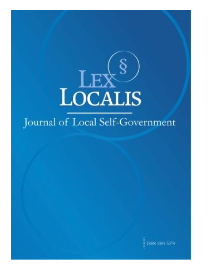ALLERGIC DISEASES IN HUMANS IN THE GANGA RIVER COASTAL AREAS: A STUDY OF RIVER SIDE INDUSTRIAL DEVELOPMENT AREAS
DOI:
https://doi.org/10.52152/m0r4sy25Keywords:
This study investigates the prevalence, perception, and coping strategies associated with allergic diseases among human populations residing in the coastal areas of the Ganga River, particularly in Uttarakhand and Uttar Pradesh.Abstract
This study investigates the prevalence, perception, and coping strategies associated with allergic diseases among human populations residing in the coastal areas of the Ganga River, particularly in Uttarakhand and Uttar Pradesh. Utilizing a well-structured interview schedule consisting of 38 items, data were collected from 467 respondents across diverse demographic groups. The analysis employed Partial Least Squares Structural Equation Modeling (PLS-SEM), descriptive statistics, and demographic correlation to explore the interaction between environmental exposure, healthcare access, awareness, symptom frequency, and allergy type.The structural model revealed that Environmental Risk Exposure (ERE) and Healthcare Access and Response (HCAR) significantly influenced the overall perception of allergic diseases, explaining 24% of the variance. This perception, in turn, moderately impacted individual behavior, symptom recognition, and preventive knowledge adoption. Strong correlations were observed between awareness and symptom management, as well as between healthcare access and allergy type recognition. Measurement constructs demonstrated good reliability and validity, with composite reliability values above 0.80 and AVE values exceeding 0.50.Environmental concerns such as garbage dumping, air pollution, and stagnant water emerged as major perceived triggers of allergic conditions. Although most demographic variables showed no significant variation in allergy experience, occupation and treatment preferences showed notable differences. Individuals preferring traditional medicine reported lower exposure and symptom frequency, while those relying on allopathy experienced more acute conditions.The study’s findings emphasize the importance of integrated public health strategies, combining environmental improvements, health education, and inclusive healthcare services. By highlighting real-world experiences, this research contributes actionable insights for community-based interventions and policy design in allergy-prone semi-urban areas. Despite limitations related to self-reporting and geographic scope, the study provides a validated framework for future research and public health planning aimed at reducing the impact of allergic diseases in vulnerable riverine communities.
Downloads
Published
Issue
Section
License
Copyright (c) 2025 Lex localis - Journal of Local Self-Government

This work is licensed under a Creative Commons Attribution-NonCommercial-NoDerivatives 4.0 International License.








